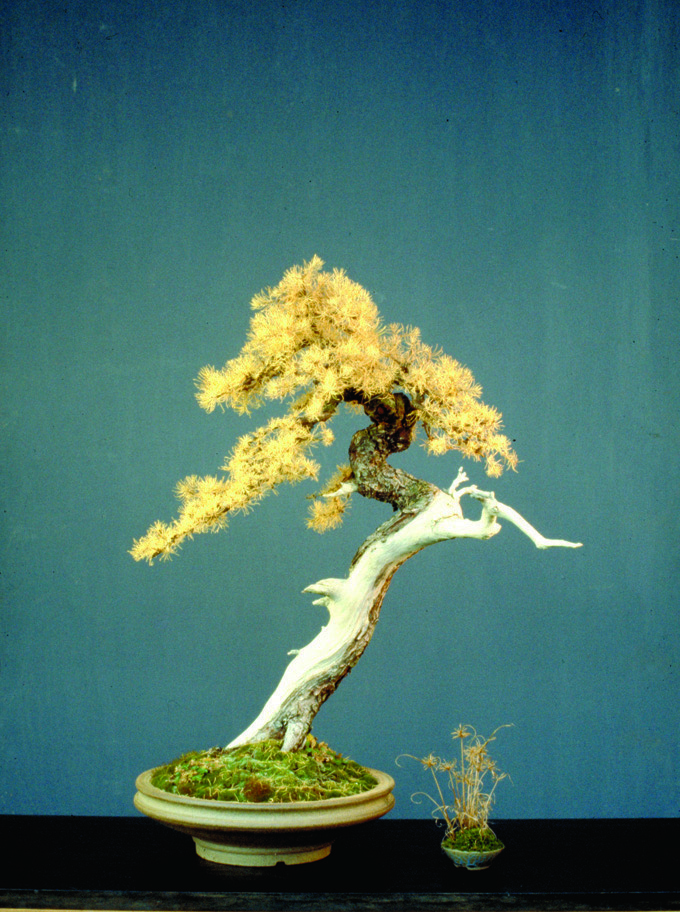 A famous tree by a famous bonsai artist. There’s a lot to like here, including the bark-deadwood contrast, the shift from the lower trunk’s subtler motion to the sudden S-shape at the top, the golden fall color, the pot, the moss. Even the sweet little companion.
A famous tree by a famous bonsai artist. There’s a lot to like here, including the bark-deadwood contrast, the shift from the lower trunk’s subtler motion to the sudden S-shape at the top, the golden fall color, the pot, the moss. Even the sweet little companion.
Two North American natives
This post qualifies as another in our series of species specific offerings and a tribute to an artist as well. The tree is our native North American Larch (aka Tamarack, Larix laricina). The artist is another native, Larch Master Nick Lenz (aka Rarch Master Renz). BTW: I’m usually reluctant to use the much abused term ‘Bonsai Master’ and I suppose Larch Master is not that different. But in this case, I think we can give it a pass. After all, if Nick Lenz is not the Larch Master, then who is?
I supposed we’d be remiss if we didn’t mention that larch are deciduous conifers. That puts them in rarefied territory; I think there are only two other genera that qualify (go ahead, set me straight).
All the photos in this post are from Nick’s book, Bonsai from the Wild (published by Stone Lantern), which happens to be the definitive book on collecting bonsai, especially North American natives.
 Yes. It’s a tank. A ceramic tank (Nick is a ceramic artist as well as a bonsai artist). I think it portrays a war ravaged larch forest in Europe, with our American larch substituting for it’s European cousin (Larix decidua). It’s a great forest planting, with or without the tank.
Yes. It’s a tank. A ceramic tank (Nick is a ceramic artist as well as a bonsai artist). I think it portrays a war ravaged larch forest in Europe, with our American larch substituting for it’s European cousin (Larix decidua). It’s a great forest planting, with or without the tank.
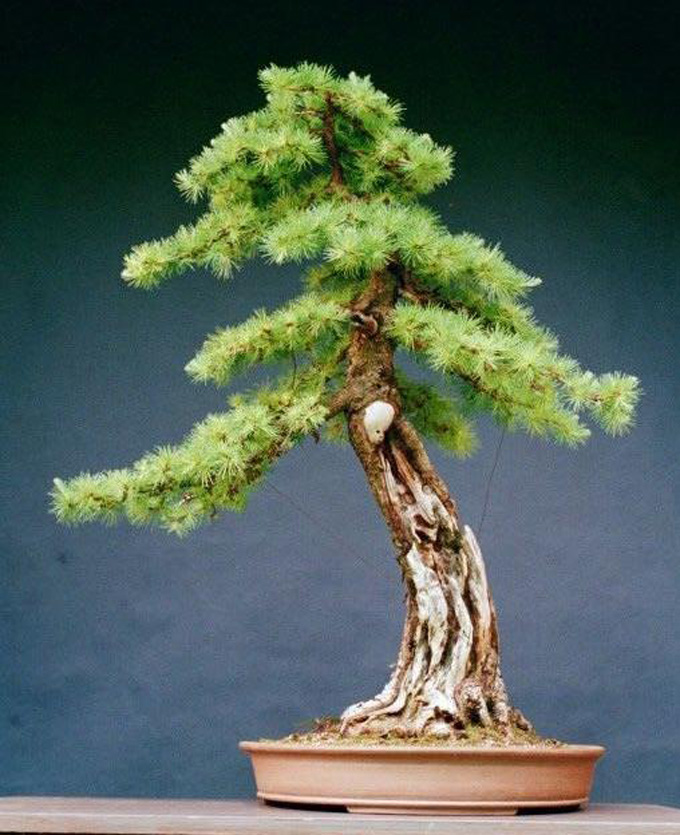 Demon larch. Another of Nick’s now famous trees. Aside from the ghoulish deadwood faces, there’s the excellent taper and the way the grooved deadwood flows into the strong nebari (exposed roots), almost like buttresses. Larches aren’t known for their taper or nebari, so even without the scary deadwood, this is an exceptional tree.
Demon larch. Another of Nick’s now famous trees. Aside from the ghoulish deadwood faces, there’s the excellent taper and the way the grooved deadwood flows into the strong nebari (exposed roots), almost like buttresses. Larches aren’t known for their taper or nebari, so even without the scary deadwood, this is an exceptional tree.
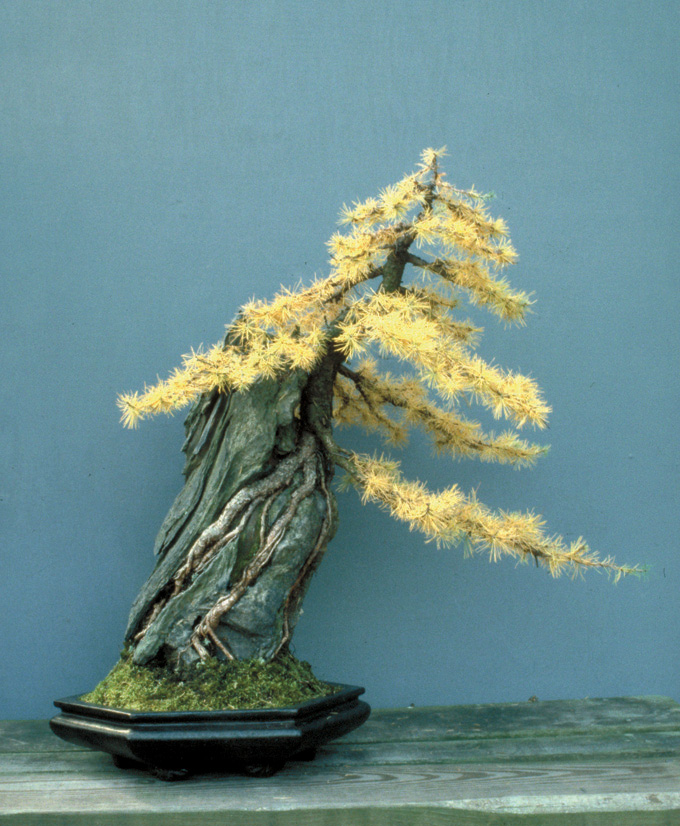 Though the fall color is nice, this one is all about the way the roots fit and cling so perfectly to the rock’s grooves.
Though the fall color is nice, this one is all about the way the roots fit and cling so perfectly to the rock’s grooves.
 Spring. It’s a little fuzzy, but you can still see the new needles popping out.
Spring. It’s a little fuzzy, but you can still see the new needles popping out.
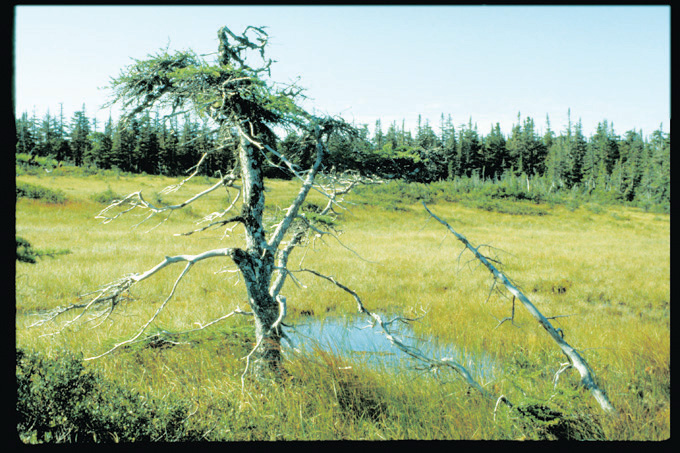 Bog larch. It may not be that big, but you can be sure that it’s old.
Bog larch. It may not be that big, but you can be sure that it’s old.
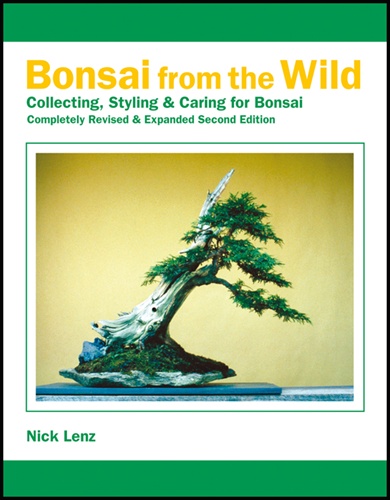 A rare gem of a book. There’s more valuable information on collecting in Nick’s classic book than anywhere (that I’ve ever seen at least). And much more too.
A rare gem of a book. There’s more valuable information on collecting in Nick’s classic book than anywhere (that I’ve ever seen at least). And much more too.
Metasequoia, Glyptostrobus, Pseudolarix and Taxodium are all also deciduous coniferous genera so there are at least 4 others by my count, nice larches!
That didn’t take long. It’s those two rare ones that got me (Glyptostrobus, Pseudolarix). In fact Glyptostrobus is so rare that I think it only grows on the moon.
Don’t forget Ginko’s
Hi Dana,
I don’t think most dendrologists agree that Ginkgo is a conifer.
Here’s a quote: “In earlier classification systems the Ginkgo tree was placed in the class Coniferopsida, because it is thought to be more related to conifers than to any other gymnosperm, but the two groups appear to have evolved independently.
Although the Ginkgo is more like a conifer than a deciduous broadleaf tree it is neither, it has a unique position. Recent research suggests a much closer relationship to the cycads than to the conifers..”
It’s from here: http://kwanten.home.xs4all.nl/thetree.htm
Thanks for the correction. I learned something new!